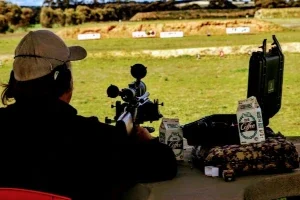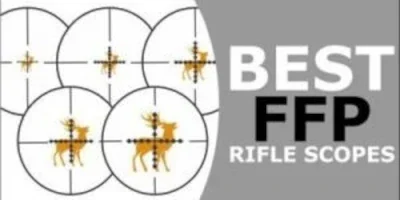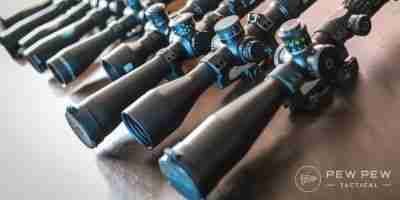Next port of call was the local range at Monarto, just out of Adelaide in South Australia. Which just happens to be home of Precision Rifle SA. We met a bloke in a hi-vis vest who offered to show us around. Nice guy and just happened to be the President of the Precision Shooting Club and National Discipline Chairman for Precision Rifle.

Luke
Hunting in Australia does PRS
Hunting in Australia does PRS is where we set out to create a rifle that will outperform us in almost every scenario of Precision Rifle Series shooting.
Table of Contents
Hunting in Australia does PRS – Long range shooting is bound to make us better hunters. But unfortunately, because we love hunting so much, all of our firearms were created with the next big Buck in mind, not with the idea of plinking at differing distances out to 1200m in a restricted time frame. So with that in mind we set out to create a rifle that would outperform us in almost every scenario of Precision Range Series shooting and because we have done hours and hours of research we thought we would share it with you.
Division
There are two divisions in the PRS (Precision Rifle Series), Production and Open. There are different rules of course and Production appears to be about creating a level playing field for those of us with a limited budget. That being said, we got our heads down, counted pennies and subjected ourselves to a lifetime of marital servitude, sold various bits of junk (anything with barrels or wheels!) and decided we would go Open Division. Let the games begin.

Tim
If you are going to play the game you had better know the rules.
First port of call for me was our national organisation, the Sporting Shooters Association of Australia (SSAA). As the PRS was all totally new to me.
I also met the club Secretary who was testing his new rifle setup. Lot’s of good information about the sport so I talked his ear off! Leaving him in peace finally, I snapped a few photo’s including one that had South Australia written all over it. Anyone that has ever been a Crow Eater will spot why immediately.
My impression overall was a good one. The range was well laid out and maintained. There were supporting buildings where firearm and safety courses are run on a regular basis. The range was well run with no hint of being unsafe despite dozens of shooters being present. The club officials were friendly and knowledgeable. It was a great day out with a bunch of people of all ages just enjoying their sport.
Something to note.
- Precision Rifle is a discipline operating under the Sporting Shooters Association of Australia.
- Precision Rifle Series is a franchise operating under Precision Rifle Series USA.
So while they both operate promoting the sport, the rules can vary.
NB: The rules are in Portable Document Format (PDF) and you will need a reader for the format if you don’t already have it. You can download a reader here: Adobe Acrobat Reader
Luke
Scope Selection
As we know you can have the most accurate rifle on the planet but if it’s got an average scope it’s only ever going to be an average rifle, so with this in mind we started with scope selection. Because of our background we had a good idea of a place to start. Unfortunately we quickly got caught up in the black hole of YouTube and Google, and the solid background from which we were determined to stick to ( we will get to these principals later), quickly took a back seat (for now).
We found that the land of the free (USA) was a great place to source solid info on what glass to use in this space, as they have been shooting PRS the longest. We had some high level criteria which we wanted to tick off as a consequence of existing knowledge (fairly comprehensive some might say) and some long nights in front of Youtube, as follows:
- First Focal Plane (FFP).
- Nothing over 25x zoom,
- Had no idea on what reticle would be best.
- Enough Elevation to get us out to 1200m with 6.5 Creedmoor as a benchmark cartridge (Yes, we are going 6.5 Creedmoor. We will break down that process for that decision later.).
- Prefer a left side windage turret but not a deal breaker.
With this in mind we funneled in on the following reads to land on our decision:
The Optic we selected was ultimately driven by the foundations we have listed above, what also played a massive part upon reflection, was not only the knowledge I acquired though years at the Gun Shop, but also my Business Partners military experience. Ultimately this is the point where we finally got a grip on our core principles and pulled ourselves out the ass of the bloke on the internet, who for all we knew had no idea what he was talking about anyway. We wanted a European optic for clarity/repeatability and didn’t really want to spend an exorbitant amount of money on a Schmidt and Bender PMII. We did however spend a serious amount of time looking into the Vortex Razor HD and the Nightforce ATACR because they are both obviously outstanding optics in their own right.
Our Choice
We selected the Khales K525i DLR, which is a 5-25×56 in the First Focal Plane with a 34mm Tube.
We adore the fact there is a selection of a left or right windage and that the parallax adjustment sits below the elevation turret, not to mention the glass is made by Swarovski! There are countless reviews of this scope on YouTube and the net, in general most of which cant speak highly enough of this optic. We have provided a review from the current 26# Ranked PRS shooter in the USA (as at September 2022). If you liked this reading through our journey for the selection of our scope, make sure you check out the site Friday week for another release to see what we bite off next!
Ok. Due to circumstances beyond our control, we are going to postpone the rest of this series until mid 2023.
Things won’t have changed by then (not much lol!)
Luke will be chasing up some research first hand in Europe and the USA.
Tim
FAQ (Frequently Asked Questions)
When you change the power or zoom on the scope, the reticles at the FFP change in size. The subtensions (the distance between two points on the target) of the reticle remain constant regardless of the scope power setting. Read more about First Focal Plane and Second Focal Plane Reticles here: SCOPE FOCAL PLANES
Whilst we are all very familiar with the windage dial on the right hand side of the scope, there are benefits as a right hand shooter, to having your right hand primarily for operating the action and trigger, not to mention fast target acquisition and adjustments. This may be an old military way of thinking, you should always be ready to fire the next shot!






